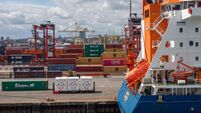Plans to buy 60 new ambulances unveiled
Up to 60 new ambulances are to be bought over the next three years as part of a major upgrade of the Northern Ireland Ambulance Service (NIAS), it was announced today.
At the same time, a further 60 non-emergency vehicles and 26 Rapid Response Vehicles are planned over the same period as part of a £17m (€21.5m) investment - the biggest ever in the NIAS.













